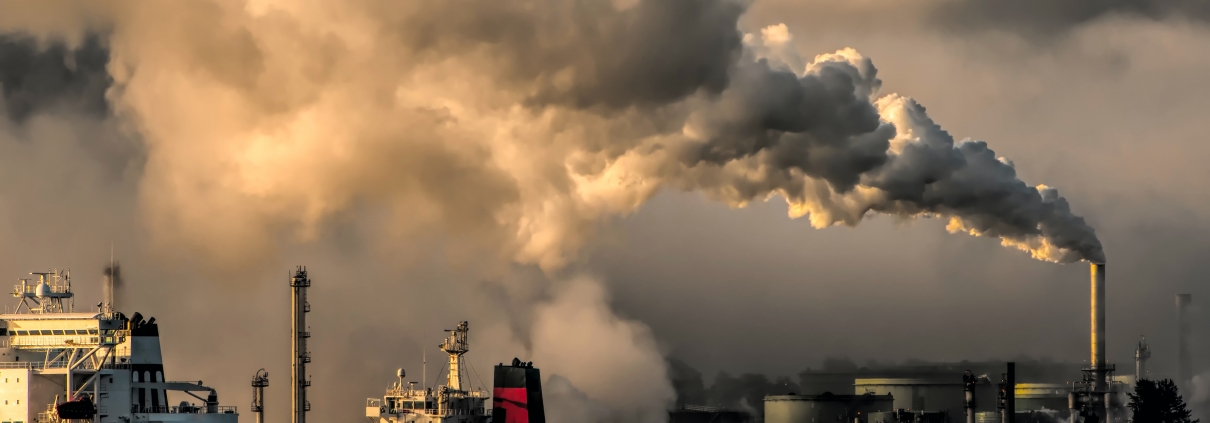The main sources of air pollution
Excess concentrations of foreign substances entering the atmosphere are called air pollution. This article provides an overview of harmful pollutants released by anthropogenic sources.
Traffic & Mobility
Petrol and diesel engines of cars, ships, trains and other vehicles emit pollutants such as carbon monoxide (CO), nitrogen oxides (NOx), particulate matter (PM), sulfur dioxide (SO2), and volatile organic compounds (VOCs). Friction from tires and brake wear also create primary – i.e. direct – particulate matter emissions. In addition, the nitrogen dioxide (NO2) and VOCs released by road vehicles also undergo photochemical reactions to form ozone (O3).
In Europe, more than 40% of NOx and almost 40% of primary PM2.5 emissions are linked to road transport. In the United States, 35.8% of CO and 32.8% of NOx stem from road transport.
Industry & Heating
The combustion of fossil fuels such as coal and oil in industrial processes in power plants, refineries, and factories release a variety of pollutants, the majority of which are identical to those emitted by traffic and mobility. On top of this, chemical processes and volatile industry byproducts also cause VOC emissions.
In Europe, around 60% of sulfur oxides come from energy production and distribution. In the US, stationary fuel combustion sources like electric utilities and industrial boilers are responsible for 73.2% of sulfur dioxide pollution.
Agriculture
A wide range of nitrogen compounds (NO, NO2, N2), including ammonia (NH3), can be attributed to fertilizer production, farm machinery, and livestock waste management in agriculture. In addition, methane (CH4) is released by the digestive processes of livestock.
In Europe, agricultural activities cause approximately 90% of ammonia emissions and 80% of methane emissions. In the US, livestock and manure management are responsible for 46% of methane emissions.
Other Sources
Not all air pollution comes from human activity: Sand and dust storms from deserts like the Sahara, the Gobi, and the Taklamakan are responsible for PM2.5 pollution due to the size of the grains spread. Wildfires generate high levels of PM pollution along with CO and NOx. Volcanoes release NH3 and SO2 during eruptions, which can form secondary PM when combined with other pollutants in the atmosphere. Salt from sea spray also constitutes as PM pollution, contributing up to 80% of particle levels in coastal areas. Even plants are a source of VOC emissions, because they use the pollutant to adapt to environmental stress, communicate to other plants, and to defend against insects.
Pollution sourcing is necessary for effective clean air action
It is evident that air pollution serves as a major challenge for cities. As outlined in this article, pollutants come from various sources, and it is not always clear exactly where. This makes managing air pollution difficult. Hence, high-resolution data from the urban environment is needed in order to identify the sources. The air quality sensors that are part of Breeze Technologies’ Environmental Intelligence Suite enable you to achieve exactly those insights. Reliable, affordable, and built upon the latest technological developments, our small form-factor sensors can be deployed virtually anywhere to build air quality monitoring networks across cities and regions with ease. They monitor all major air pollutants in real-time, with the data assessed and calibrated on our Environmental Intelligence Cloud. The result: Clear insights and analytics for effective clean air actions.
Contact us today to start tracking air pollution in your city today!


 unsplash.com / Andreas Felske
unsplash.com / Andreas Felske